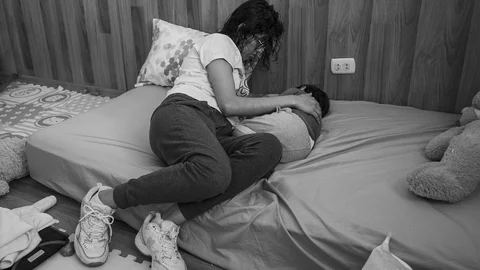

Madres primerizas: ¿Cuándo perdió la mujer el poder de decisión sobre su parto?
Dar a luz a tu primer hijo debería ser uno de los recuerdos más sublimes de tu vida, sin embargo, …
This year, the Inter-American Commission on Human Rights will present the Peruvian government with its final report on the case of Cusco farmer Eulogia Guzmán, whose mistreatment at a health center during childbirth caused her son irreversible harm. This case of obstetric violence is the first to be heard by the commission.
When Eulogia Guzmán gave birth in a medical center for the first time, her baby almost died. While Eulogia’s first five children had been born at home without complications, the arrival of her son Sergio was fraught from the moment she set out for the Yanaoca Health Center, a medical post located in the upper reaches of the region of Cusco. On the afternoon of August 10, 2003, Eulogia—a 26-year old Quechua-speaking farmer from the village of Layme—found herself suffering severe labor pains in a passageway at the facility. Her husband’s attempts over thirty minutes to locate a staff member were in vain.
Eulogia felt her contractions becoming more frequent and knew the baby was on its way. She adjusted her pollera skirt and squatted down to begin pushing. A nurse, Gladys Limachi, soon appeared and ordered her onto a stretcher. In Quechua, Eulogia repeatedly begged: “Ama hina Kaychu, amaña kuyurichiwaychu [Please don’t move me].” But the nurse ignored her pleas. Grabbing Eulogia firmly by the wrists, Limachi attempted to lift her to her feet. In the midst of the struggle, Eulogia gave birth to the boy, and he fell headfirst to the floor.
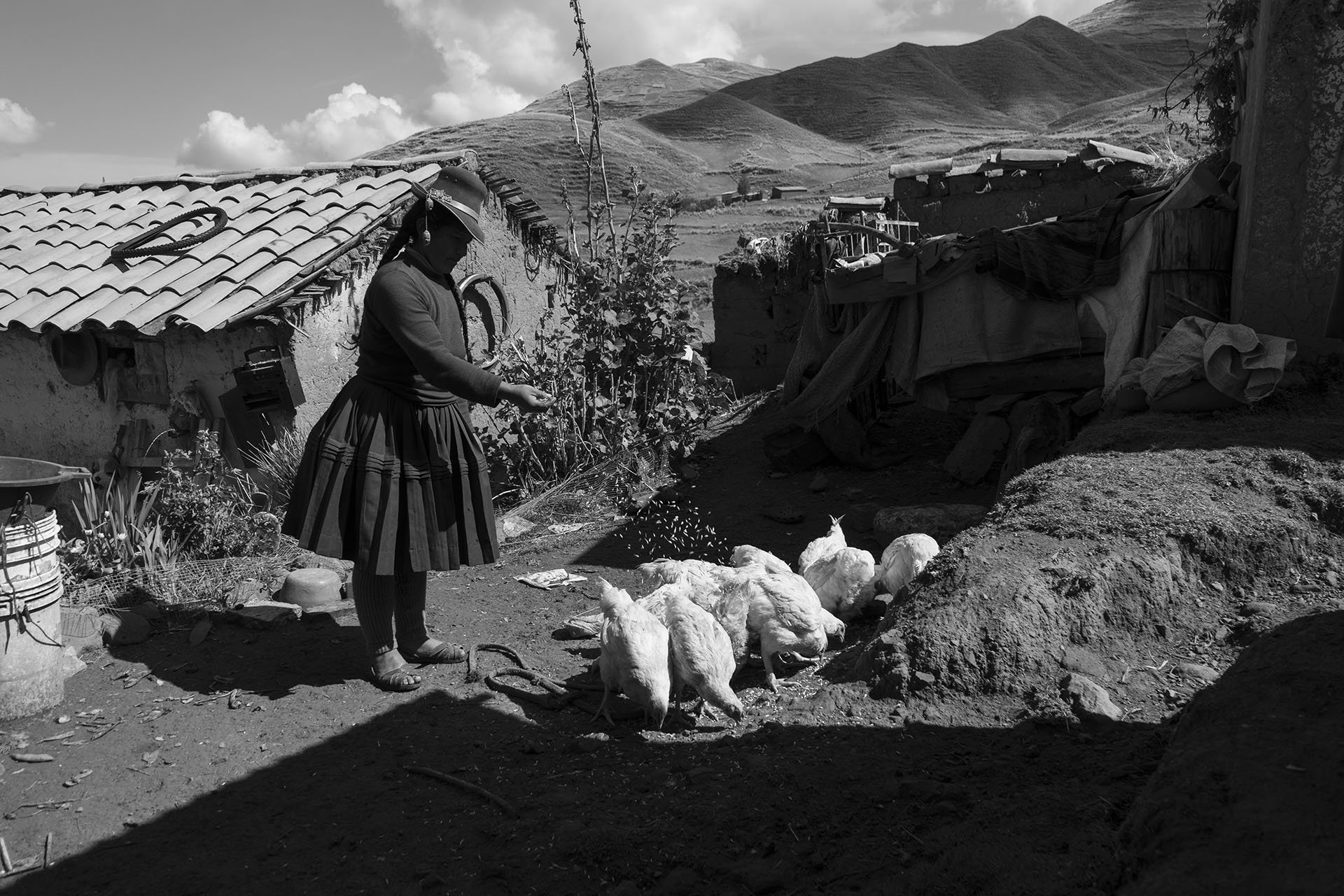
The blow to Sergio’s head left him with irreversible brain injuries due to neonatal asphyxia. It was just the first malpractice in a series that Eulogia and her son would suffer. Sergio never learned to walk or speak. He became blind and suffered frequent seizures. Although Eulogia was not yet aware of it, she had become a victim of obstetric violence. The term may sound odd, but many women in Peru are likely to recognize the situations it describes: the ridicule that greets their tears; the repeated vaginal touching without consent; the unwarranted use of caesarean section; the disrespect for cultural birthing practices; the interference in the natural process of delivery; the use of medications without informed consent; the separation from the child without medical justification; the failure to respond appropriately to concerns or fears about childbirth. Countries in the region—such as Mexico, Argentina and Venezuela—already define obstetric violence as a crime.
The phenomenon is far from isolated. According to a historic United Nations report published in September 2019, this type of violence against women is “a form of violation of their fundamental rights that is widespread and normalized in health services.” Five years earlier, the World Health Organization (WHO) had recognized the issue as a public health problem and proposed reform to the birthing services women receive in the medical system.
As well as the historic marginalization based on gender that they suffer, poor and indigenous women like Eulogia find themselves especially ill-equipped to deal with this particular form of abuse. Although Peru’s population contains Latin America’s third-highest percentage of indigenous people (24%), health services have long ignored the traditions and birthing culture of this group.
Following Sergio’s bungled birth, mother and child were transferred to the regional hospital in Cusco. There the abuses continued. Eulogia found herself once again waiting in a corridor, as if she did not exist. It would be seven days before staff first informed her of Sergio’s condition. They prevented Eulogia from seeing him during his hospitalization and provided little guidance about how to keep him alive at home. “They took advantage of the fact that at that time I did not understand Spanish,” says Eulogia in her sweet and shy voice. We are sitting in a small office of the vicarage of Sicuani, where we had come to review the complaint she had filed, seventeen years ago, against four workers of the Yanaoca Health Center for medical malpractice during her son’s birth. In the intervening period, a lawyer for the prelature had helped to ensure Eulogia’s case was not forgotten.
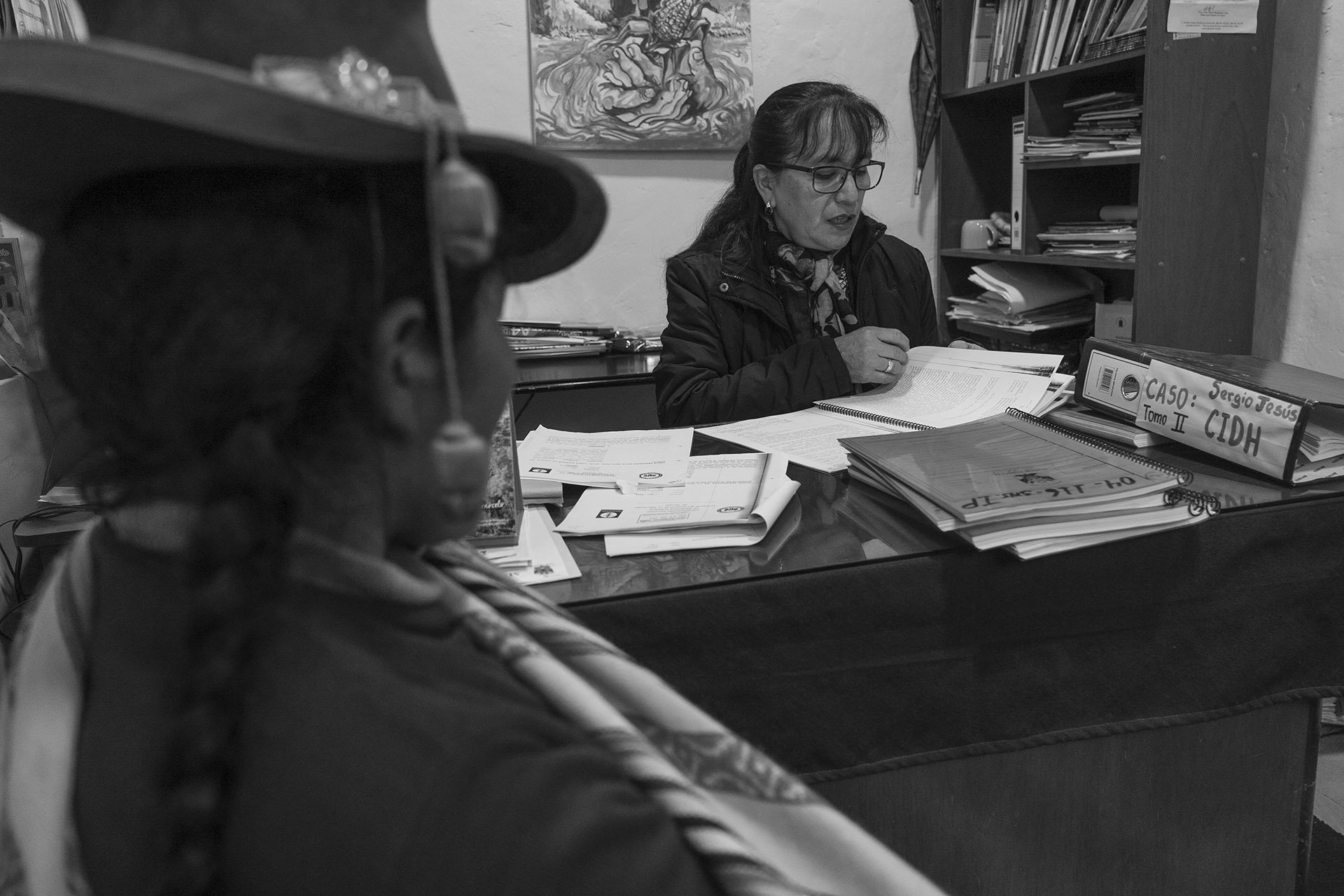
Four bulky folders, each bearing her son’s name, hold dozens of documents and photographs from a case that the Supreme Court shelved in December 2009. Eulogia Guzmán remembers that time as if it were yesterday. She has never spoken to a journalist about what occurred, and nobody has ever come to Layme to hear her story.
Now, following a six-year review, the Inter-American Commission of Human Rights (IACHR) could give the case—the first of obstetric violence it has considered—new impetus through the final report it will present to the Peruvian government.
Even though one of the accused admitted negligence and offered an out-of-court settlement of 4000 soles, the legal process for all four—the obstetrician Marina Aguilar, the nurse Gladys Limachi, and the doctors Alberto Zamalloa and Juan Carlos Pelaeza—ended in acquittal. The IACHR report will make conclusions and recommendations to the state for redress and to set new standards in cases of obstetric violence. “If the Peruvian State does not comply, the commission then sends the case to the Inter-American Court of Human Rights, where other justice and compensation measures can be ordered for Eulogia,” explains Gabriela Oporto, the lawyer from the feminist organization Promsex in charge of the case.
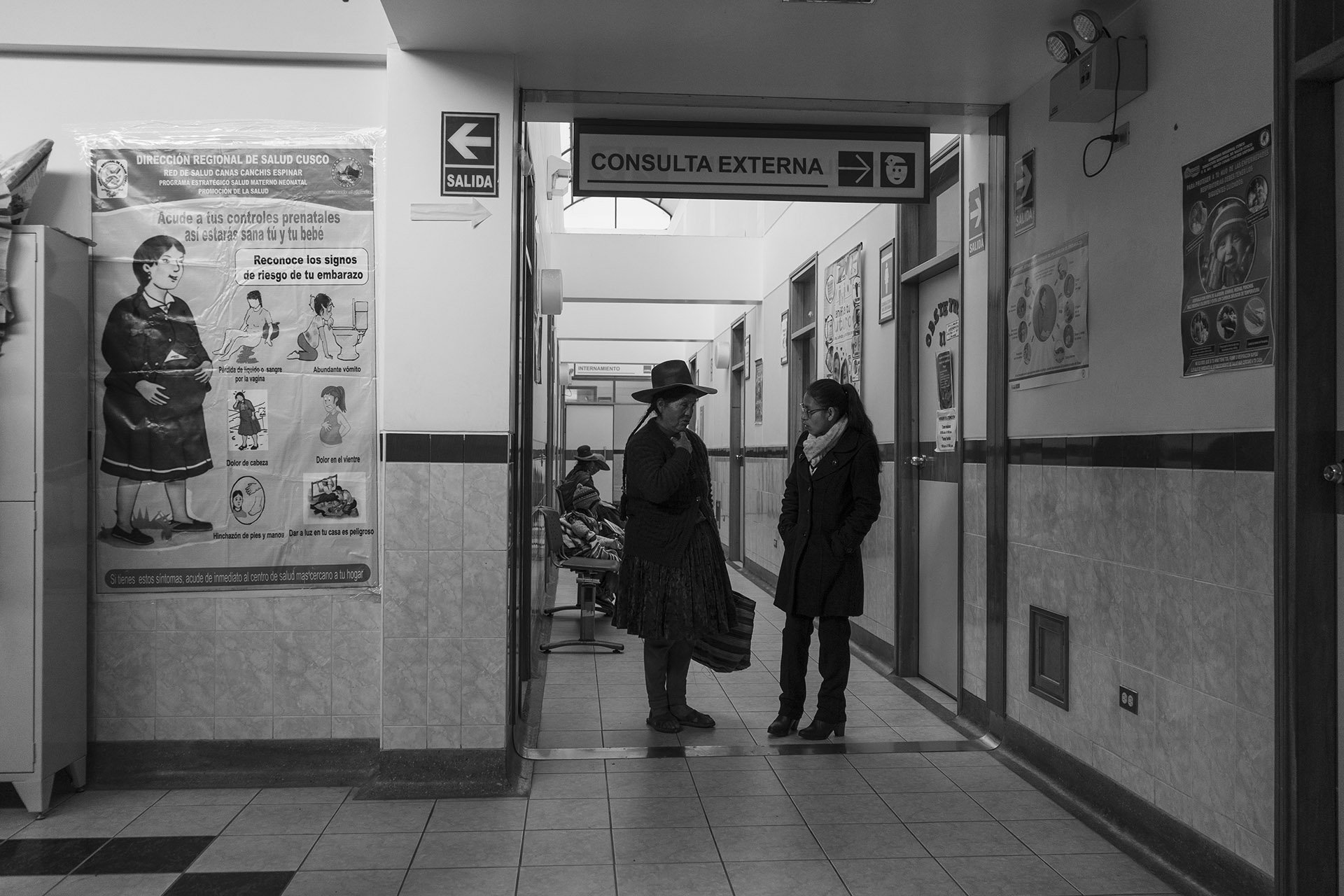
Birthing conditions for the almost three million indigenous women living in Peru today differ little from those that Eulogia Guzmán faced in 2003. The health system still faces enormous challenges to guarantee these women appropriate treatment that is non-coercive and respects their cultural norms. “Women who give birth in their homes are currently fined, and midwives are pressured to meet the targets for institutional births.” The rights of indigenous mothers and their children are not being placed at the center,” warns a report from the Center for Indigenous Cultures of Peru (Chirapaq), which in 2019 collected instances of mistreatment and rights violations of indigenous mothers during childbirth in the Cusco region.
Although it is four years since the state included obstetric violence as one of sixteen forms of violence against women and banned the associated practices, criminal or administrative penalties are yet to be applied. The issue remains largely invisible; many women lack information and straightforward means to report the abuse they are subject to. Disinformation and fear are even greater among indigenous women because the system operates in a language they do not understand and fails to consider their customs, geographic location, and level of formal education.

A large sign depicting pregnant women in different birthing positions greets visitors entering the Yanaoca Health Center. One is shown squatting as she holds onto a cord hanging from the ceiling while her partner lovingly supports her from behind. But this image does not represent a response to complaints by pregnant women forced to renounce their customs; instead, it is a health strategy dating back to 2005 to increase the number of births in medical services and reduce maternal and child mortality.
Squatting is the ancestral manner a child enters the world, a practice that indigenous women from the Andes and the Amazon have learned from their mothers and grandmothers. It appears in cave paintings and on the iconography of all cultures. Yet until a few years ago, promotion of the practice in health centers was unthinkable despite scientific evidence showing that, in this position, women exert less force, feel less pain, have less bleeding, and are less likely to experience tearing.
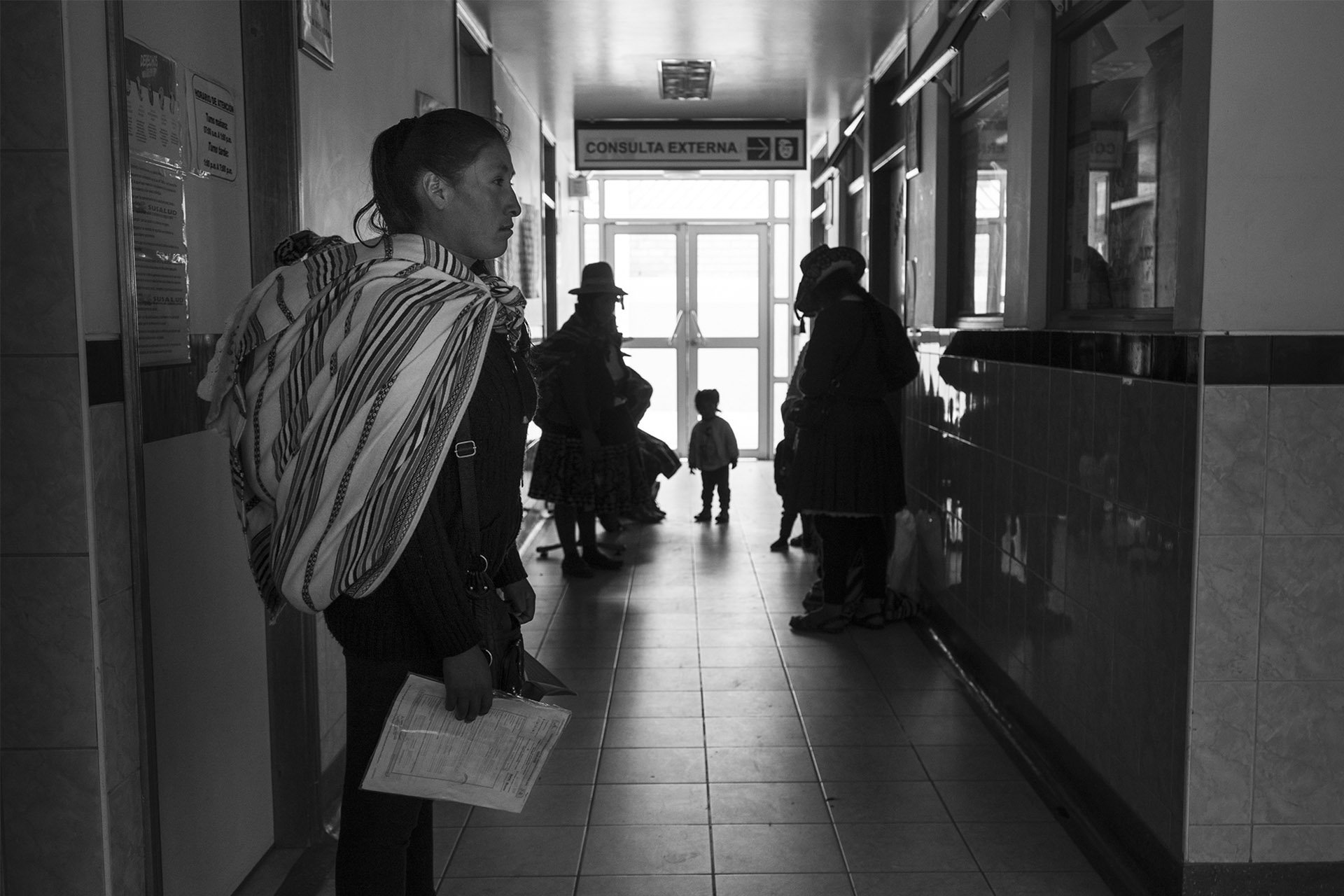
Women’s preferences have been overlooked since the beginning of the last century when childbirth ceased to be an intimate experience in the home and instead became a controlled medical procedure in a hospital. Since then, women have been obliged to lie on a bed and push with their legs pointing upward so that gynecological and obstetric personnel can take the baby out more easily in a sterile environment. In Peru, 92.7% of births are performed in this way.
Although the Ministry of Health began encouraging squatting or vertical delivery in health care centers to improve public health indicators rather than to restore rights, the move did become the starting point for significant reforms. Since 2007, the United Nations Population Fund has been supporting childbirth programs using an intercultural approach, and the state has been making commitments to revalidate the worldview of indigenous women and their traditions during childbirth.
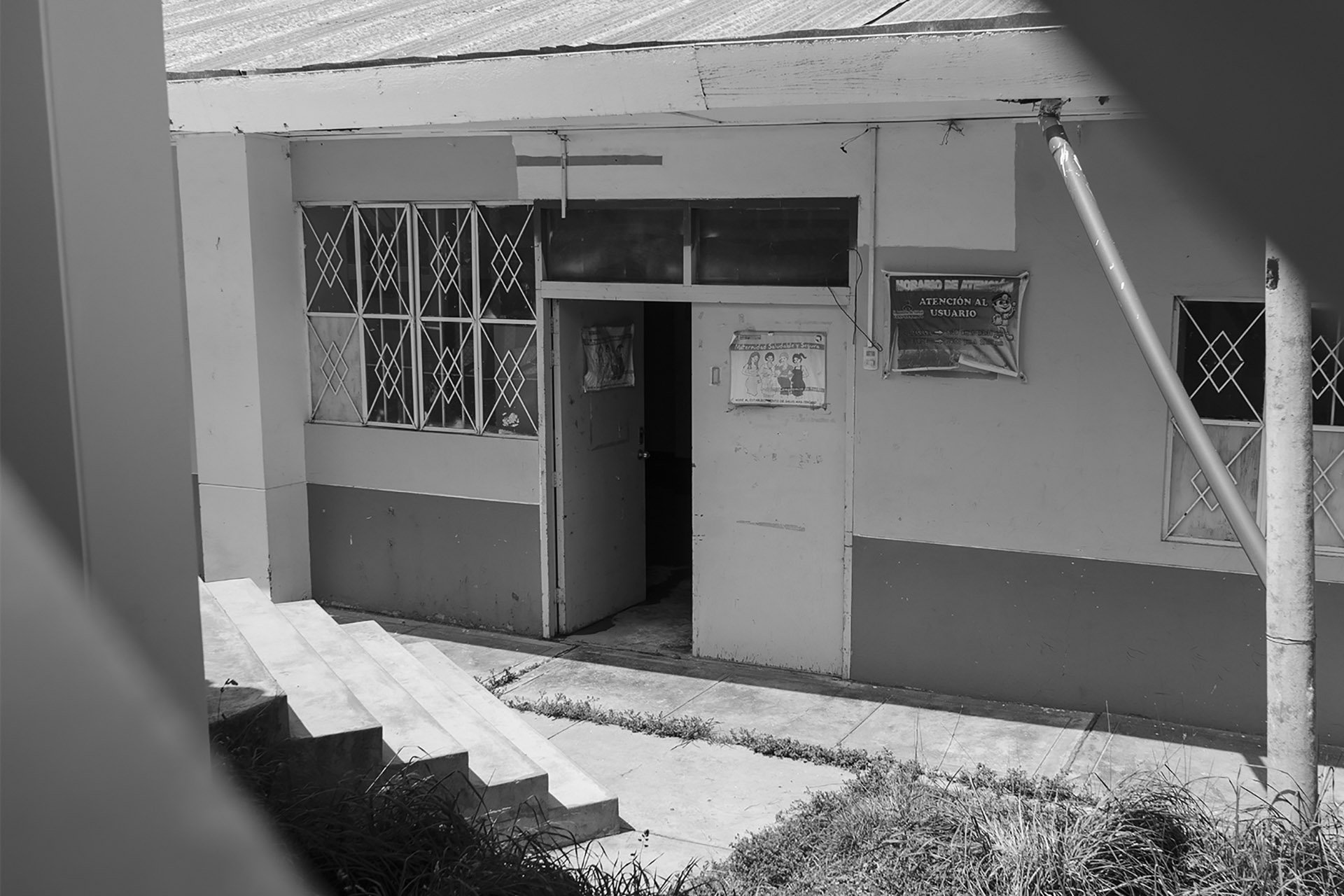
The real turning point came when the World Health Organization moved to support a change to the prevailing model. Since 2014, the focus has been to empower women to make decisions around their birthing experience, a shift that inspired a pilot program known as Parto Humanizado (Humanized Childbirth). Beginning at the Lima Maternal Perinatal Institute, the concept entails respect for women’s preferences and their physiological timing. The program has been extended to other hospitals and health centers around the country. An update to the technical standard for delivery care was published in July 2016.
The current protocol clearly states that health services providers must offer women a birthing plan appropriate to their needs and in which they determine—in accordance with their own culture—the timing, the birthing position, the pain relief procedures, and who will attend. The regulations describe the medical procedures that should be considered routine, including enema, pubic shaving, maneuvering the mother’s stomach, and episiotomy or vaginal incision for the baby’s parturition.
The Ministry of Health now acknowledges that there is no reason to restrict a woman’s food and liquid intake during labor, and nor should the amniotic sac be artificially ruptured when labor is progressing normally. The ministry recommends vaginal touching only if the mother feels an urge to push or if loss of amniotic fluid is detected. Finally, there is recognition of the importance of something as instinctive as the newborn having immediate contact with the mother’s skin. “This is not merely a change in practice; rather, it is a change in the care paradigm,” says Doctor Antonio Levano, a defender in Peru of humanized or physiological childbirth and an advocate for more natural birthing.
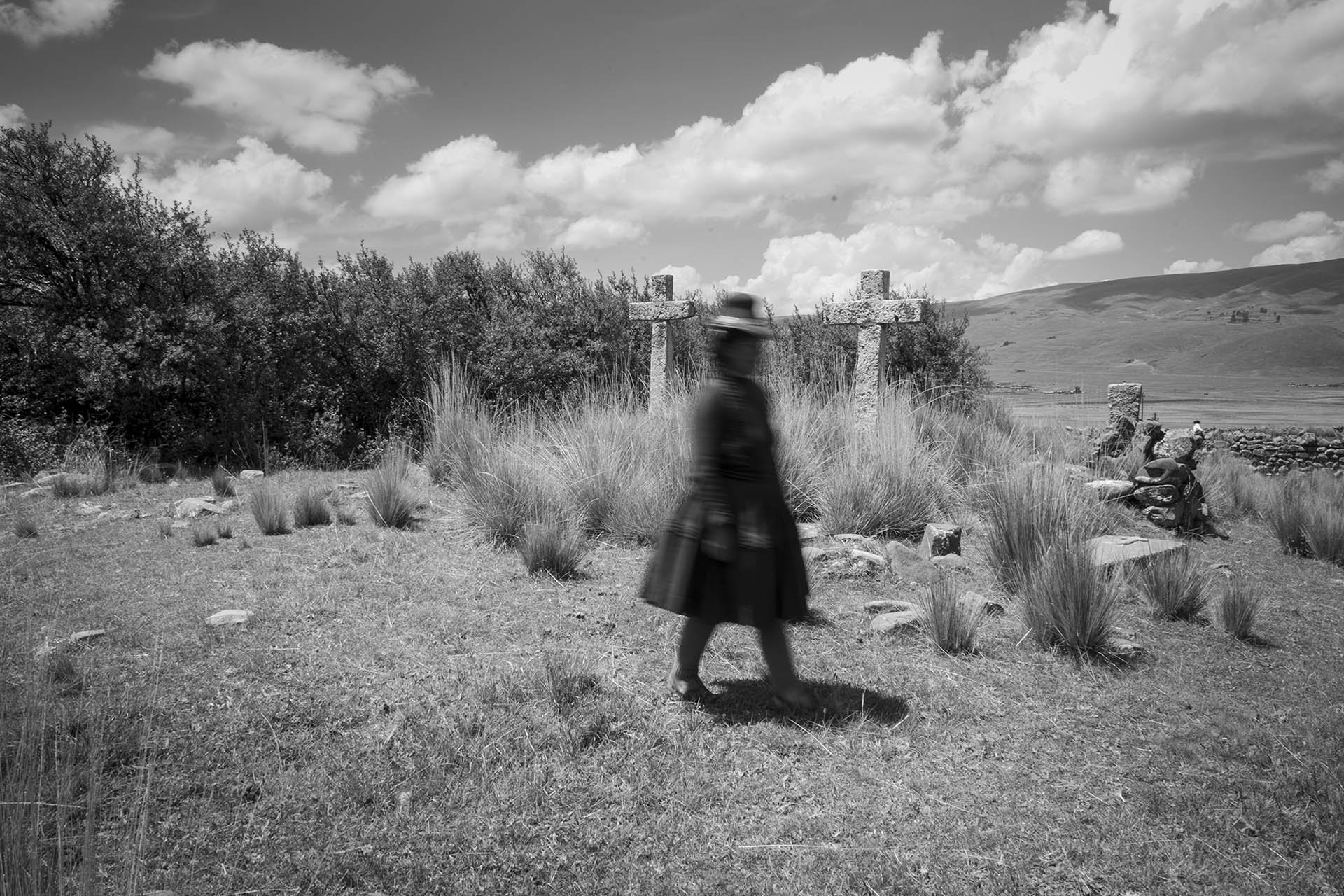
One of the most significant challenges in the birthing care revolution is to increase the number of women who understand their right to make informed decisions. Since information is not yet easily accessible even in cities, the barrier is still higher for indigenous women in the most remote rural areas. A survey conducted by Dr Raquel Hurtado La Rosa, a former researcher at the National Center for Intercultural Health of the National Health Institute, supports this view. Among ninety pregnant women and eighty puerperal women (women who have recently given birth) treated at hospitals and public institutions during 2016 in Lima, Cusco, Abancay, and Loreto, more than half reported receiving no information about their right to determine how they would give birth.
The study included interviews with twenty-four doctors and midwives about their awareness of violent practices and their knowledge of squat or vertical delivery. Eight participants, mostly doctors, reported receiving no training on the new care standard promoting vertical delivery.

One of the most significant challenges in the birthing care revolution is to increase the number of women who understand their right to make informed decisions. Since information is not yet easily accessible even in cities, the barrier is still higher for indigenous women in the most remote rural areas. A survey conducted by Dr Raquel Hurtado La Rosa, a former researcher at the National Center for Intercultural Health of the National Health Institute, supports this view. Among ninety pregnant women and eighty puerperal women (women who have recently given birth) treated at hospitals and public institutions during 2016 in Lima, Cusco, Abancay, and Loreto, more than half reported receiving no information about their right to determine how they would give birth.
The study included interviews with twenty-four doctors and midwives about their awareness of violent practices and their knowledge of squat or vertical delivery. Eight participants, mostly doctors, reported receiving no training on the new care standard promoting vertical delivery.
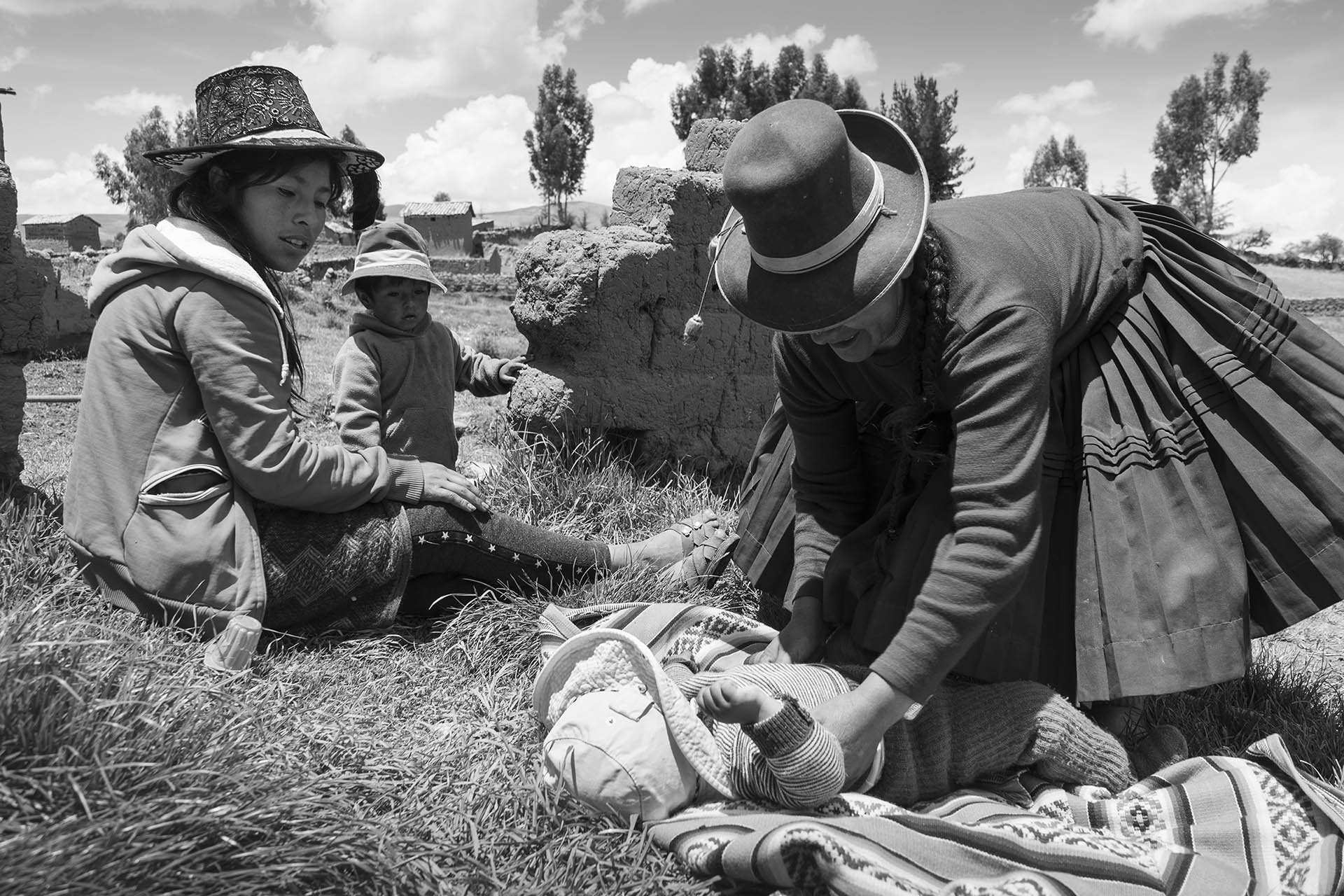
Since midwives were sidelined and their ancestral knowledge lost, cesarean births have increased in rural areas. In 2000, caesarean delivery accounted for four out of every one hundred births for indigenous women. By 2018 this figure had risen to sixteen, according to the Demographic and Family Health Survey of the National Institute of Statistics and Informatics (INEI). “It is a contradiction that Peru claims to treat childbirth with respect whilst at the same time persecuting midwives,” says Chirapaq President Tarcila Rivera, who presented about this problem before the United Nations Permanent Forum on Indigenous Issues.
In recent years, Peru has discouraged indigenous midwives from practicing by denying them the authority to issue live birth certificates. This measure has further raised barriers that already prevented indigenous women from exercising their rights.

Walking to the cemetery where her son Sergio lies, Eulogia Guzmán steps nimbly from one stone to the next to avoid the mud. Although she is less than 150 centimeters tall, she was still able to carry Sergio on her back over thirteen years to reach medical appointments in Sicuani and Cusco. It was a December day in 2015 when, unable to treat the boy’s pneumonia herself, Eulogia found herself with no option other than to again carry him to the Yanaoca Health Center. But the staff refused to admit him, forcing her to return home to spend his final hours. “I felt humiliated, invisible, helpless again,” she recalls.
“Ari haykaq phunchayllapas chayamunkacha justicia tiempunchis [Will our time for justice ever come?],” Eulogia wonders aloud as she pulls the weeds that grow over Sergio’s grave. She feels more confident speaking Quechua and can express exactly what she means. She learned Spanish only in order to undertake the seventeen-year battle with the justice system. She has lost count of the number of times she has repeated her story to police, and how many times a prosecutor has asked if she is sure of herself, and how many times she has gone before a judge to ratify her testimony. There are moments when Eulogia feels the cause is lost and that nothing now can cure the sense of loss or the wounds of a birth that will not heal.
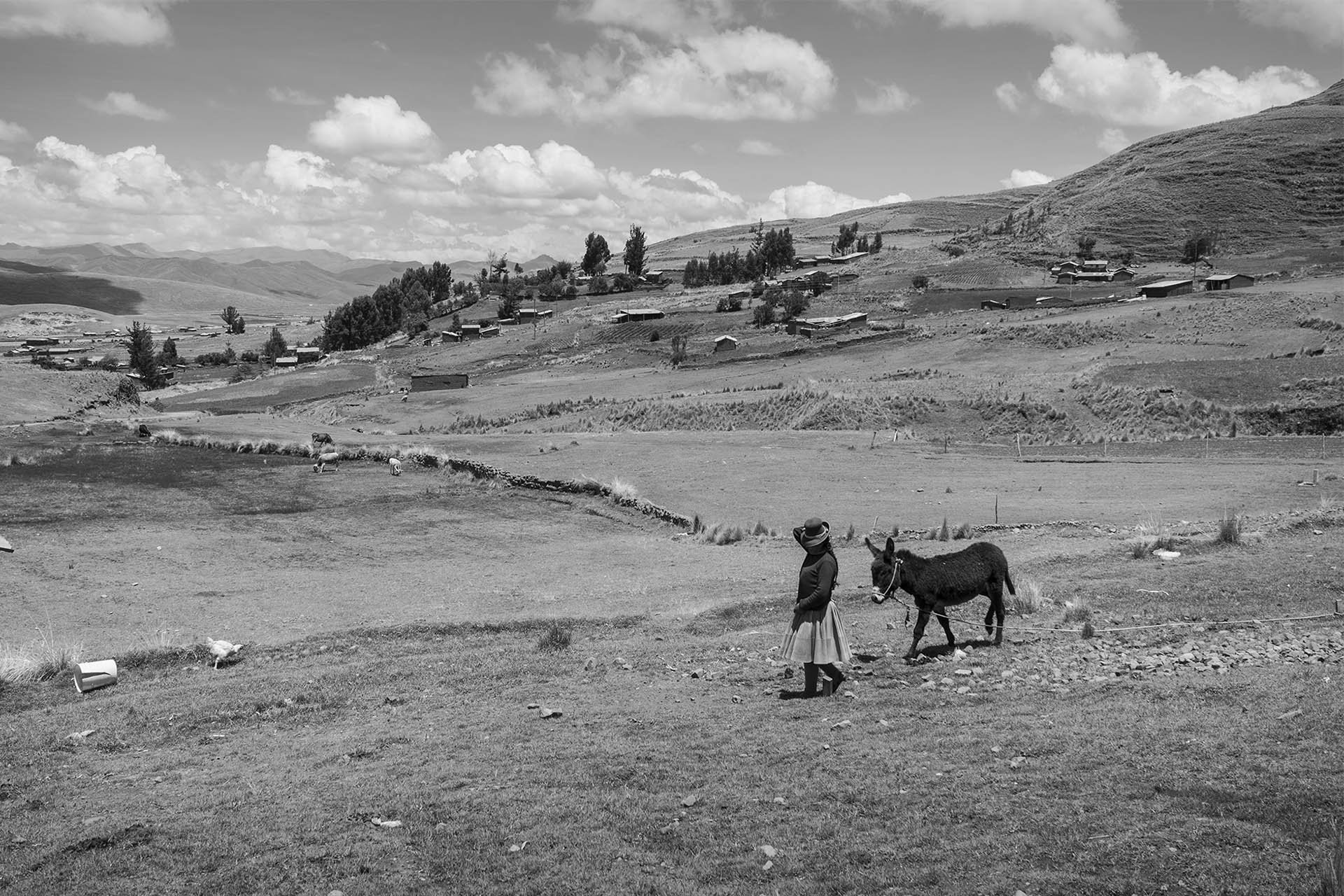
Ask Eulogia how many children she has, and she will always say: “Five boys, two girls, and one who passed away.” She is very patient with children. On some days of the week, a supervisor of the food program in Qali Warma schools asks Eulogia to mind her baby. Eulogia’s home is often overrun by children playing with chickens and guinea pigs. Some are her own grandchildren; others she looks after for a living.
Eulogia Guzmán may not know it, but the outcome of her case before the Inter-American Commission on Human Rights will set a precedent for other indigenous women mistreated during childbirth. Other women, who, like her, are still afraid to go to a health center because they regard it to be a place where they will suffer mistreatment and discrimination simply for being female and indigenous.
*Edited by Stefanie Pareja.